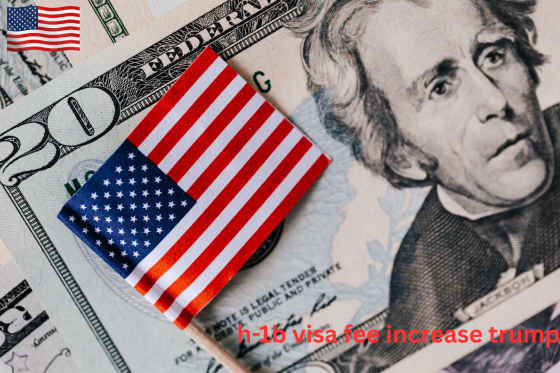Introduction
The debate over immigration and skilled labor has always been a hot topic in U.S. politics. One of the most controversial decisions during the Trump era was the H-1B visa fee increase Trump announced, which sought to raise costs for employers hiring foreign workers. This move was positioned as part of his “America First” agenda, but it sparked widespread backlash from tech companies, immigration advocates, and legal experts.
Understanding the H-1B Visa Program
The H-1B visa allows U.S. companies to employ foreign professionals in specialized roles, often in technology, engineering, and medicine. Traditionally, the application fees were modest, making the program accessible to both large corporations and startups. However, the H-1B Visa Fee Increase Trump’s proposal threatened to change that balance
The Proposed H-1B Visa Fee Increase Under Trump
Under the Trump proclamation, the fee was set to skyrocket from a few hundred dollars to $100,000 annually per application. For context:
- Previous Fee: Around $215 (excluding legal costs).
-
Proposed Fee: $100,000 per year, per worker.
This dramatic increase would have made the program financially unfeasible for many companies. The H-1B Visa Fee Increase Trump policy was designed to discourage reliance on foreign workers and push firms to prioritize hiring American employees.
Impact on Companies and the Tech Industry
Tech giants like Google, Amazon, Apple, and Microsoft have long depended on H-1B visas to fill roles requiring advanced skills. The H-1B visa fee increase Trump planned created uncertainty, as companies feared losing access to global talent. Critics argued that the U.S. risked falling behind in innovation if businesses could not hire the brightest minds from around the world.
Legal and Political Backlash
The proposal faced immediate legal challenges. Immigration experts called the H-1B Visa Fee Increase Trump “lawless” and questioned whether such a massive change could bypass Congress. While some groups supporting American workers praised the move, most economists and tech leaders warned it would hurt competitiveness and push talent to countries like Canada or the U.K.
Historical Context of Visa Fee Increases
While U.S. visa fees have increased before, they were typically small adjustments to cover administrative costs. The H-1B visa fee increase in Trump’s proposal was unprecedented in scale, making it one of the most extreme immigration policy shifts in recent history.
How Did Trump Impact H-1B?
Donald Trump campaigned heavily on his “America First” agenda, and the H-1B Visa Fee Increase Trump policy was a central part of that vision. By proposing a $100,000 annual fee for each application, Trump intended to reduce the number of foreign workers entering the U.S. and push companies to hire Americans instead. While supporters claimed this would protect domestic jobs, critics argued the H-1B visa fee increase in Trump’s approach would push global talent away and harm U.S. innovation.
How Much Were the H-1B Visa Fees?
Before the H-1B visa fee increase Trump announced, the cost of filing an H-1B visa was about $215, plus additional legal expenses. This was manageable for most businesses. However, the H-1B Visa Fee Increase Trump proposal represented a huge leap, turning a modest fee into a $100,000 annual burden. For companies sponsoring multiple employees, this could mean millions in added costs. The drastic difference made the H-1B visa fee increasemore of a Trump deterrent than a practical policy.
What Was the H-1B Denial Rate During Trump?
Another major change beyond the H-1B visa fee increase, Trump, was the rising denial rate. Under previous administrations, denial rates for initial petitions were low, often below 10%. During Trump’s presidency, however, denial rates climbed as high as 24%. This meant more uncertainty for both workers and employers. The H-1B Visa Fee Increase: Trump was not the only challenge; stricter reviews and tougher scrutiny created additional hurdles.
When Did the U.S. Visa Fee Increase?
Historically, visa fees have gone up gradually to cover administrative costs, but nothing compared to the H-1B visa fee increase under Trump. Smaller increases happened in 2016 and again in 2020, but Trump’s plan to impose a $100,000 fee was unprecedented. The H-1B Visa Fee Increase—Trump stood out not just because of the number but because it fundamentally aimed to discourage companies from using the program at all.

